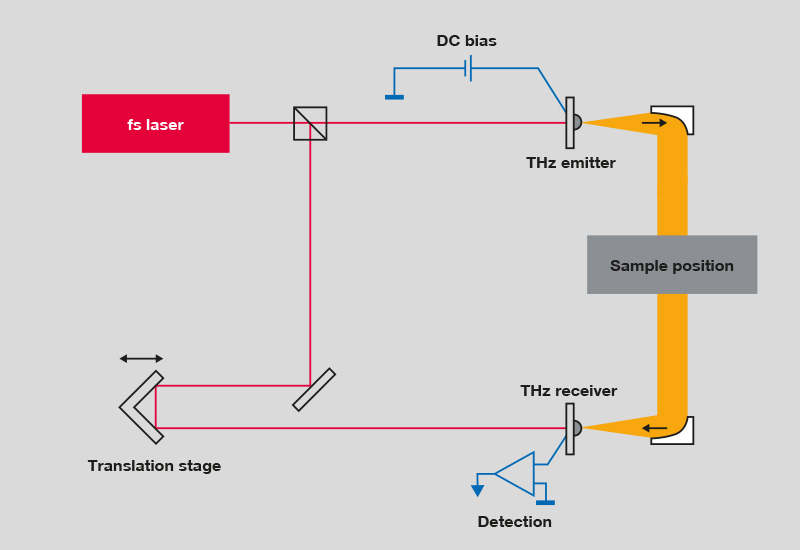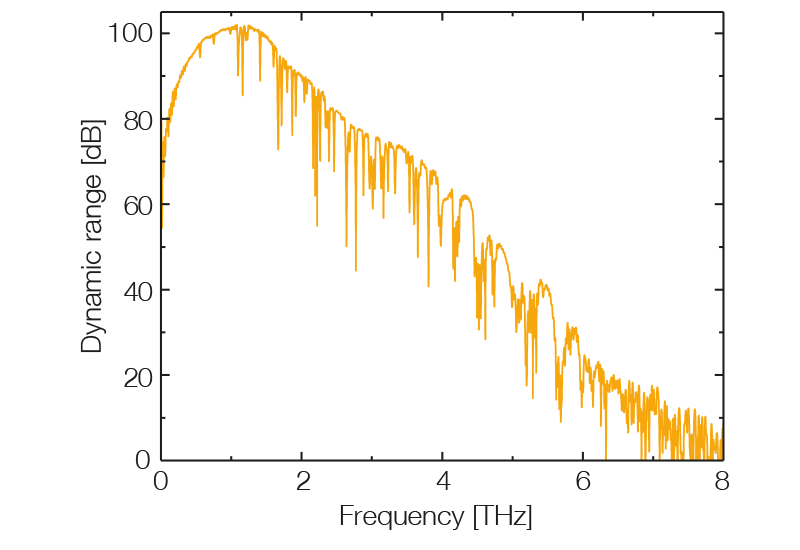Pulsed Terahertz
Time-domain terahertz generation
- Photoconductive switches generate pulsed terahertz radiation
- TeraFlash pro: 6 THz bandwidth, 95 dB PDR in < 20 s
- TeraFlash smart: 1600 pulse traces/s @ 150 ps scan length
- Femtosecond fiber lasers + InGaAs antennas
Pulsed terahertz radiation is generated with femtosecond lasers. In a typical time-domain setup, the laser pulse is split in two; one part travels to the terahertz emitter, and the other part, after interacting with a sample, travels to the detector.


An ultrashort laser pulse generates a current transient in the emitter and as a result, an electromagnetic wave packet with a broad spectrum in the terahertz range. In the detector, the incident terahertz pulse changes the properties of the material (e.g., conductivity or birefringence) and the laser pulse probes this very effect. A variable delay stage scans the terahertz wave packet with a time-shifted copy of the laser ("probe") pulse. A fast Fourier transform of the terahertz amplitude trace then produces the terahertz spectrum.
TOPTICA’s TeraFlash pro employs a highly precise delay stage with a time resolution of 1.3 fs. As a result, the system achieves a bandwidth of 6 THz and a peak dynamic range of 95 dB in less than 20 seconds. The TeraFlash smart replaces the traditional mechanical delay with an “ultrafast” electronic one and acquires 1600 pulse traces per second.
On the emitter side, the most established technologies utilized GaAs or InGaAs-based photoconductive switches. Other mechanisms involve nonlinear crystals, such as GaP, ZnTe or DAST. TOPTICA’s FemtoFiber lasers provide superior specifications that fit all common emitter types.
